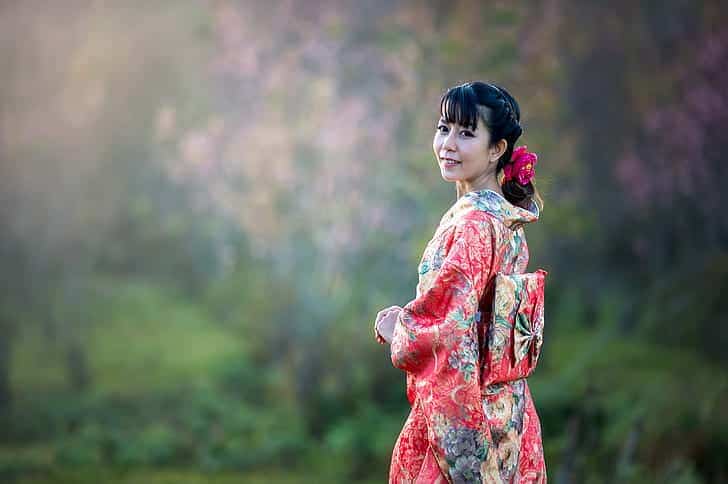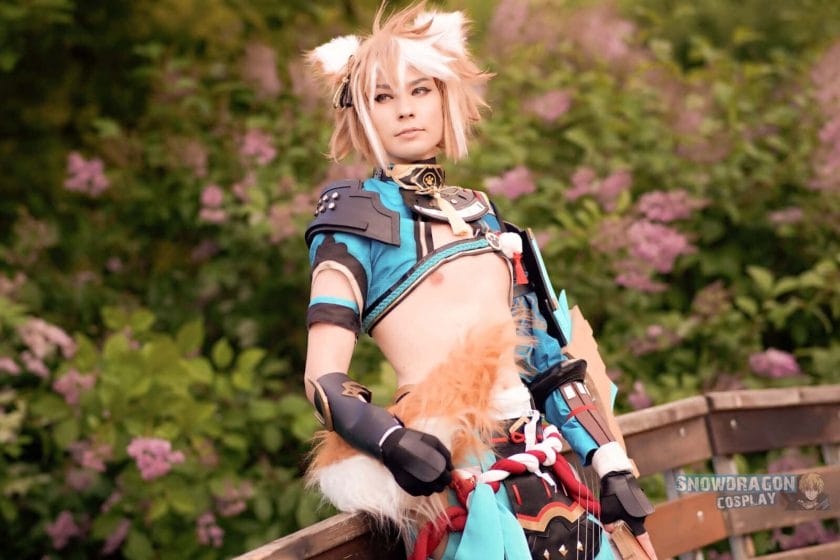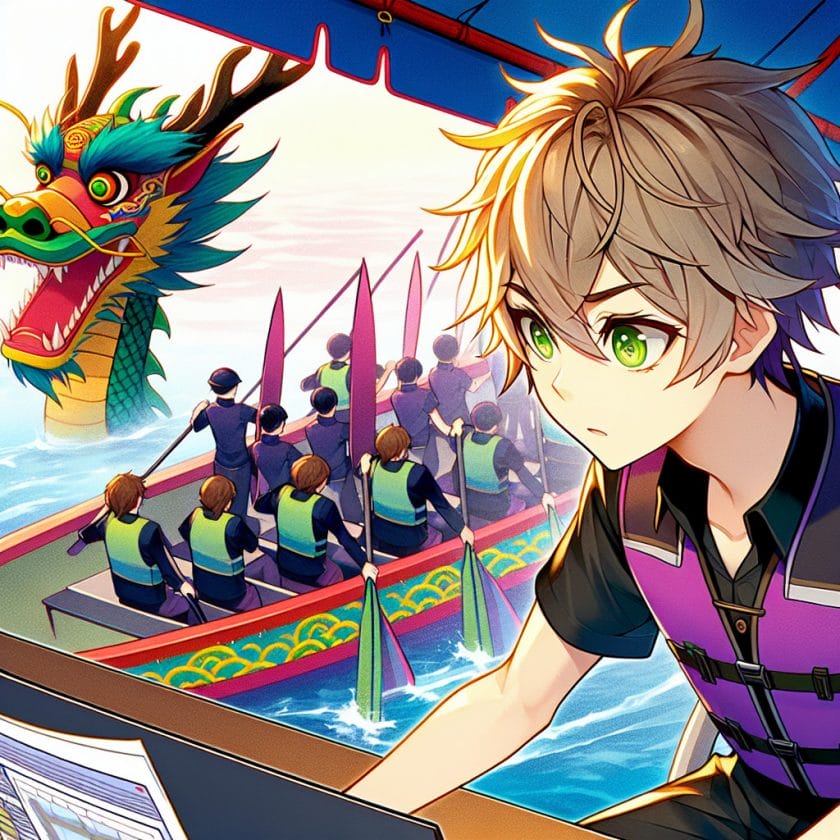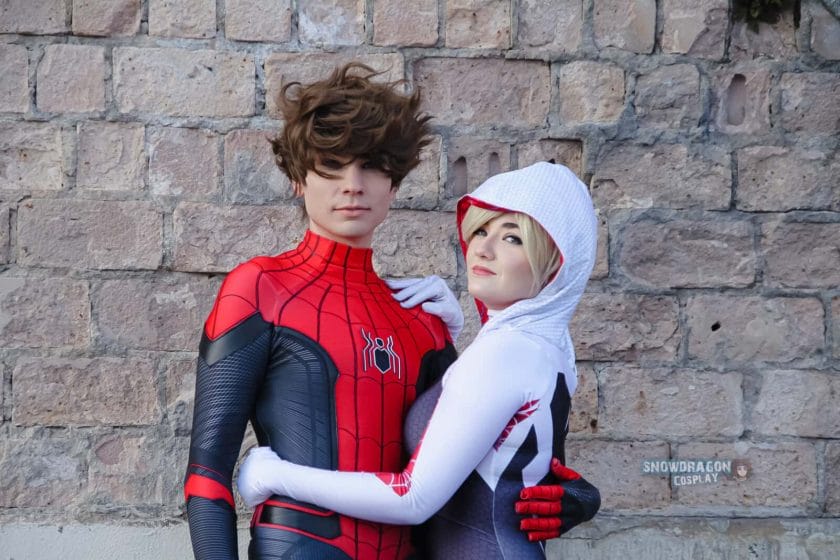Author
-

German Cosplayer from Nürnberg, professional Model & Walkingact for events & content creator.

1. The Origins of Japanese Cute Girl Culture: How It All Began
Have you ever wondered how the phenomenon of Japanese cute girl culture came to be? Well, let me take you on a journey back in time to uncover its origins. It all started in the 1970s when a wave of cuteness swept through Japan. This movement, known as kawaii, emerged as a response to the strict societal expectations placed on women. Young girls began embracing a more innocent and childlike aesthetic as a form of rebellion against traditional gender roles.
One key figure in the development of cute girl culture is Yumiko Igarashi, an illustrator who popularized the big-eyed, adorable characters that we associate with this subculture today. Her illustrations captured the hearts of many and soon became iconic symbols of kawaii culture.
The Influence of Anime and Manga
Anime and manga also played a significant role in shaping Japanese cute girl culture. These forms of entertainment showcased cute female protagonists with exaggerated features and vibrant personalities. Characters like Hello Kitty and Sailor Moon became household names, further contributing to the spread of kawaii aesthetics.
The Rise of Harajuku Fashion
In the 1990s, Harajuku fashion emerged as a prominent aspect of Japanese cute girl culture. Harajuku, a district in Tokyo known for its eclectic street style, became a hub for young people to express themselves through fashion. The colorful and playful outfits worn by Harajuku fashionistas embodied the essence of kawaii culture.
In summary:
- The origins of Japanese cute girl culture can be traced back to the 1970s.
- Kawaii emerged as a rebellion against traditional gender roles.
- Yumiko Igarashi’s illustrations and anime/manga played a significant role in popularizing cute girl culture.
- Harajuku fashion became synonymous with kawaii aesthetics in the 1990s.
2. Key Characteristics of Japanese Cute Girl Culture: Exploring Its Traits
2.1 Kawaii Aesthetics
The key characteristic of Japanese cute girl culture is its emphasis on kawaii aesthetics. Kawaii, meaning “cute” or “adorable” in Japanese, is a prominent aspect of Japanese culture and is deeply ingrained in various aspects of society. In the context of cute girl culture, kawaii aesthetics are reflected in the fashion choices, behavior, and overall appearance of individuals who participate in this subculture.
Characterized by pastel colors, frilly dresses, oversized bows, and childlike accessories, the kawaii aesthetic aims to evoke a sense of innocence and playfulness. This aesthetic can be seen not only in clothing but also in home decor, stationary products, and even food packaging. The popularity of kawaii aesthetics has led to the rise of numerous brands and businesses catering specifically to this style.
Examples:
- Lolita fashion: This subcategory within cute girl culture emphasizes Victorian-era-inspired clothing with lace, ruffles, and elaborate headwear.
- Gyaru fashion: Known for its bold makeup looks and trendy outfits, gyaru fashion is often associated with a glamorous and sexy image.
- Maid cafes: These themed cafes feature waitresses dressed as maids who interact with customers in a cute and playful manner.
2.2 Popularity among Various Age Groups
An interesting aspect of Japanese cute girl culture is its appeal across different age groups. While it may be commonly associated with young girls or teenagers, individuals from various demographics engage with this subculture. From adults who enjoy dressing up in kawaii outfits as a form of self-expression to older generations who appreciate the nostalgic elements of cute girl culture, its popularity extends beyond traditional boundaries.
This widespread appeal can be attributed to the escapism and joy that cute girl culture provides. It allows individuals to momentarily step away from societal expectations and embrace a carefree and whimsical persona. In a society that places great emphasis on conformity and strict social roles, the freedom offered by cute girl culture is seen as refreshing and liberating.
Examples:
- Cosplay events: These gatherings attract people of all ages who dress up as their favorite cute characters from anime, manga, or video games.
- Kawaii merchandise: The market for kawaii merchandise includes a wide range of products such as plush toys, accessories, stationery, and even household items.
3. Icons and Figures Associated with Japanese Cute Girl Culture: Who to Know
Harajuku Fashion Icons
One of the most influential figures in Japanese Cute Girl Culture is Kyary Pamyu Pamyu, a singer and fashion model known for her eccentric style and colorful outfits. She rose to fame with her hit song “PonPonPon” and has since become an international icon for Harajuku fashion. Another notable figure is Tsubasa Masuwaka, a popular model who helped popularize the “gyaru” subculture within Cute Girl Culture. Her signature look, characterized by heavily tanned skin, blonde hair, and dramatic makeup, became widely imitated.
Popular Characters
Within Japanese Cute Girl Culture, there are also numerous fictional characters that have gained immense popularity. Hello Kitty, created by Sanrio, is perhaps the most well-known character associated with kawaii culture. Other popular characters include Rilakkuma, a lazy bear who loves to relax, and Doraemon, a robotic cat from the future.
Idols and Pop Groups
Idols play a significant role in Japanese pop culture and are often associated with Cute Girl Culture. AKB48 is one of the most famous idol groups in Japan and has a large following both domestically and internationally. Their concept of having multiple members allows fans to have their favorite idols while promoting a sense of inclusivity.
4. Fashion Trends in Japan Influenced by Japanese Cute Girl Culture
Lolita Fashion
Lolita fashion is one of the prominent styles influenced by Japanese Cute Girl Culture. It is characterized by its doll-like aesthetic with frilly dresses, petticoats, lace details, and accessories such as bows and ribbons. There are different substyles within Lolita fashion, including sweet Lolita, gothic Lolita, and classic Lolita, each with its own distinct elements.
Decora Style
Decora style is another fashion trend influenced by Cute Girl Culture. It involves wearing multiple layers of colorful clothing and accessories, such as oversized bows, hair clips, and brightly patterned stockings. The aim is to create a playful and vibrant look that embraces the kawaii aesthetic.
Gyaru Fashion
Gyaru fashion emerged in the 1990s and remains popular within Cute Girl Culture. It is characterized by its glamorous and exaggerated style, featuring heavily tanned skin, bleached or dyed hair, dramatic makeup, and trendy clothing brands. Gyaru fashion often emphasizes a youthful appearance and confidence in expressing oneself.
5. The Role of Social Media in Promoting and Popularizing Japanese Cute Girl Culture
Instagram Influencers
Social media platforms like Instagram have played a significant role in promoting Japanese Cute Girl Culture globally. Many influencers showcase their kawaii-inspired outfits, makeup tutorials, and lifestyle choices on their profiles. They often collaborate with brands to create sponsored content that further popularizes the culture.
YouTube Vloggers
YouTube vloggers have also contributed to the spread of Cute Girl Culture through video content. They share their experiences attending events related to kawaii culture, review products associated with it, or even provide tutorials on how to achieve specific looks or styles. These vloggers have created dedicated communities where fans can engage with one another and learn more about the culture.
Hashtags and Challenges
The use of hashtags on social media platforms has allowed individuals interested in Japanese Cute Girl Culture to connect with like-minded people around the world. Hashtags such as #kawaiifashion or #harajukustyle help create a sense of community and enable users to discover new trends, influencers, and brands. Additionally, challenges like the “Decora Challenge” or “Lolita Coord Challenge” encourage individuals to showcase their creativity and interpretation of Cute Girl Culture through their own unique style.
6. Subgenres and Subcultures Within Japanese Cute Girl Culture: A Closer Look
6.1 Lolita Fashion: Embracing Victorian-Inspired Elegance
Lolita fashion is one of the prominent subgenres within Japanese cute girl culture. It is characterized by its elegant and doll-like aesthetic, drawing inspiration from Victorian-era clothing. Lolitas often wear elaborate dresses with petticoats, lace, and bows, creating a whimsical and romantic look. This subculture has various substyles, including sweet lolita, gothic lolita, and classic lolita, each with its own distinct characteristics.
Key Features of Sweet Lolita:
– Pastel colors such as pink, lavender, and mint
– Frilly dresses adorned with bows and ribbons
– Accessories like bonnets, parasols, and lace socks
Key Features of Gothic Lolita:
– Dark color palette featuring black, burgundy, and purple
– Incorporation of elements like crosses, bats, and spiders
– Use of corsets or waist cinchers for a more dramatic silhouette
6.2 Gyaru Style: Embracing Glamorous Street Fashion
Gyaru style is another popular subgenre within Japanese cute girl culture that emerged in the 1990s. This fashion trend focuses on a glamorous and exaggerated appearance with an emphasis on tanned skin, brightly colored hair extensions or wigs, heavy makeup (including false eyelashes), and flashy clothing. Gyarus often gather in trendy shopping districts to showcase their unique style.
Main Gyaru Substyles:
1. Hime Gyaru: Inspired by princesses with a focus on elegance and luxury.
2. Ganguro: Known for extreme tans combined with colorful makeup and clothing.
3. Kogal: Characterized by school uniform-inspired outfits and loose socks.
Gyaru Style Influences:
– Western pop culture, particularly American trends
– Shibuya and Harajuku districts in Tokyo as fashion hubs
7. Expressing Affiliation with Japanese Cute Girl Culture: How Individuals Participate
7.1 Cosplay: Bringing Fictional Characters to Life
Cosplay, short for “costume play,” is a popular way for individuals to express their affiliation with Japanese cute girl culture. It involves dressing up as characters from anime, manga, video games, or other forms of media. Cosplayers meticulously recreate the costumes, hairstyles, and accessories of their chosen characters to embody them at conventions or events.
Types of Cosplay:
1. Anime Cosplay: Portraying characters from anime series.
2. Game Cosplay: Emulating characters from video games.
3. J-Fashion Cosplay: Dressing up as characters inspired by Japanese fashion styles.
Tips for Successful Cosplay:
– Research the character’s appearance and personality.
– Pay attention to details such as makeup and props.
– Practice posing and embodying the character’s mannerisms.
7.2 Idol Culture: Devotion to Pop Music Icons
Idol culture plays a significant role in Japanese cute girl culture, where fans show their support and admiration for pop music idols through various means. Fans often attend idol concerts, participate in handshake events to meet their favorite idols personally, purchase merchandise, and engage in online fan communities dedicated to sharing news and supporting their chosen idols.
Main Types of Idols:
1. J-Pop Idols: Singers who perform upbeat pop music.
2. AKB48-style Idols: Large idol groups with numerous members, known for their theater performances and frequent releases.
3. Virtual Idols: Computer-generated or animated characters who have gained a significant following.
Ways Fans Show Support:
– Attending concerts and fan meetings
– Purchasing CDs, merchandise, and concert tickets
– Participating in fan events organized by idol agencies
Remember to continue expanding on the remaining subheadings using a similar format.
8. Criticism and Controversy Surrounding Japanese Cute Girl Culture: Unveiling the Issues
8.1 Cultural Appropriation
The popularity of Japanese cute girl culture, also known as “kawaii,” has led to concerns about cultural appropriation. Some argue that non-Japanese individuals adopting elements of this culture, such as fashion or language, without understanding its historical and cultural significance can be disrespectful. This raises questions about the commodification and exploitation of Japanese culture for profit.
8.2 Reinforcement of Gender Stereotypes
Critics argue that Japanese cute girl culture perpetuates harmful gender stereotypes by emphasizing femininity, cuteness, and submissiveness in women. This can limit women’s opportunities for self-expression and reinforce societal expectations regarding their appearance and behavior.
8.3 Sexualization of Young Girls
Another controversial aspect is the sexualization of young girls within the cute girl culture. Some argue that certain fashion trends, such as Lolita fashion, can blur the line between childlike innocence and adult sexuality, raising concerns about the objectification and exploitation of underage girls.
8.4 Impact on Mental Health
There are debates about the impact of Japanese cute girl culture on individuals’ mental health. While some argue that it provides a form of escapism and self-expression, others raise concerns about unrealistic beauty standards and pressure to conform to a specific image, which may contribute to body image issues and low self-esteem.
9. Globalization’s Impact on the Spread of Japanese Cute Girl Culture Outside Japan
9.1 Social Media as a Catalyst
The rise of social media platforms has played a significant role in spreading Japanese cute girl culture beyond Japan’s borders. Platforms like Instagram and TikTok allow individuals from different countries to discover and engage with this culture, leading to its increased popularity worldwide.
9.2 Adaptation and Localization
As Japanese cute girl culture spreads globally, it undergoes adaptation and localization in different regions. Local communities incorporate their own cultural elements into the existing framework, creating unique variations of cute girl culture that resonate with their specific audience.
9.3 Economic Impact
The globalization of Japanese cute girl culture has also had economic implications. Various industries, such as fashion, beauty, and entertainment, have capitalized on its popularity by producing and selling related products. This has created new business opportunities and contributed to the growth of Japan’s export industry.
10. Celebrating Japanese Cute Girl Culture: Notable Events and Festivals
10.1 Harajuku Fashion Walk
One notable event celebrating Japanese cute girl culture is the Harajuku Fashion Walk held in Tokyo’s Harajuku district. Participants dress up in vibrant and eccentric outfits, showcasing their creativity while embracing the kawaii aesthetic.
10.2 Anime Expo
Anime Expo, an annual convention held in Los Angeles, California, serves as a platform for enthusiasts of Japanese pop culture to celebrate various aspects of cute girl culture. Attendees can participate in cosplay contests, attend panel discussions, and purchase merchandise related to their favorite characters.
10.3 Kawaii Monster Cafe
Located in Tokyo’s trendy Shibuya district, the Kawaii Monster Cafe offers visitors an immersive experience into the world of cute girl culture. The cafe features colorful decor, themed food and drinks, live performances by costumed performers known as “Monster Girls,” creating a whimsical atmosphere.
10.4 Tokyo Idol Festival
The Tokyo Idol Festival is an annual music event that showcases the idol culture, a prominent aspect of Japanese cute girl culture. It brings together numerous idol groups and solo artists for live performances, fan meetings, and special events, attracting both domestic and international fans.
11. Debunking Misconceptions About Japanese Cute Girl Culture
11.1 Not Just for Young Girls
Contrary to popular belief, Japanese cute girl culture is not limited to young girls or teenagers. People of all ages and genders engage with this culture as a form of self-expression and enjoyment.
11.2 Diverse Styles and Subcultures
Japanese cute girl culture encompasses a wide range of styles and subcultures beyond the well-known Lolita fashion. From gyaru to decora, each subculture has its unique aesthetic, allowing individuals to express their individuality within the larger framework of kawaii.
11.3 Empowerment Through Cuteness
While some may view Japanese cute girl culture as submissive or infantilizing, many participants argue that it can be empowering. Embracing cuteness allows individuals to challenge societal norms and expectations, finding strength in non-conformity.
11.4 Cultural Appreciation vs. Cultural Appropriation
It is essential to distinguish between cultural appreciation and cultural appropriation when engaging with Japanese cute girl culture. Appreciation involves respect for the cultural context and understanding its significance, while appropriation involves taking elements without proper understanding or acknowledgment.
12. Incorporation and Capitalization on Japanese Cute Girl Culture in the Entertainment Industry
12.1 Pop Music Industry
The Japanese pop music industry heavily incorporates elements of cute girl culture. Idol groups, known for their synchronized performances and cute image, dominate the music scene and have a dedicated fan base both in Japan and internationally.
12.2 Fashion Industry
The fashion industry has capitalized on the popularity of Japanese cute girl culture by producing clothing lines inspired by kawaii aesthetics. Brands like Liz Lisa and Swankiss cater to individuals who want to embrace the cute girl style in their everyday fashion choices.
12.3 Anime and Manga
Anime and manga, popular forms of entertainment in Japan, often feature characters with cute girl aesthetics. These mediums contribute to the spread of cute girl culture globally, as fans become enamored with the adorable characters and their stories.
12.4 Advertising and Marketing
Advertisers and marketers recognize the appeal of Japanese cute girl culture and frequently incorporate its elements into their campaigns. From using kawaii mascots to creating visually appealing advertisements, businesses aim to attract consumers by tapping into the cuteness trend.
13. Kawaii (Cuteness) and Women’s Empowerment in Japanese Society: Is There a Connection?
13.1 Challenging Traditional Gender Roles
Some argue that embracing kawaii aesthetics can be seen as a form of resistance against traditional gender roles in Japanese society. By defying expectations of how women should look or behave, individuals participating in cute girl culture challenge societal norms.
13.2 Confidence Through Cuteness
For many women, adopting a cute girl aesthetic can boost their self-confidence and provide a sense of empowerment. Expressing themselves through cuteness allows them to embrace their individuality without conforming to mainstream beauty standards.
13.3 Kawaii as a Form of Self-Care
Engaging with cute girl culture can also be seen as a form of self-care for women in Japanese society. It offers an escape from the pressures of daily life and provides a space for self-expression, allowing individuals to prioritize their mental well-being.
13.4 Criticisms and Limitations
While some argue that kawaii aesthetics empower women, others criticize it for reinforcing gender stereotypes or infantilizing women. The connection between kawaii and women’s empowerment is complex and subject to individual interpretation.
14. Changes and Developments within Japanese Cute Girl Culture Over Time
14.1 Evolution of Fashion Trends
Japanese cute girl culture has witnessed various shifts in fashion trends over time. From the emergence of Lolita fashion in the 1990s to the rise of gyaru and decora styles, these changes reflect evolving tastes and influences within the culture.
14.2 Influence on Pop Culture
Japanese cute girl culture has had a significant impact on global pop culture, influencing various industries such as music, fashion, and entertainment. Its distinct aesthetic has become synonymous with Japan’s image abroad.
14.3 Embracing Diversity
In recent years, there has been a growing emphasis on embracing diversity within Japanese cute girl culture. This includes promoting body positivity, inclusivity across different genders and ages, and recognizing the individuality of participants.
14.4 Globalization’s Role in Change
The process of globalization has played a crucial role in shaping the changes within Japanese cute girl culture over time. Increased exposure to international influences through media platforms has led to cross-cultural exchanges and further diversification of the culture.
In conclusion, Japanese cute girl culture is a fascinating and popular phenomenon that has captivated people worldwide. From the adorable fashion styles to the kawaii characters, it’s no wonder why so many are drawn to this unique aspect of Japanese culture. If you’re interested in exploring and embracing this cute girl culture further, why not check out our cosplay services? We offer a wide range of costumes and accessories that will help you bring your favorite kawaii characters to life. So go ahead and embrace your inner cuteness with our cosplay services!

Author
-

German Cosplayer from Nürnberg, professional Model & Walkingact for events & content creator.








